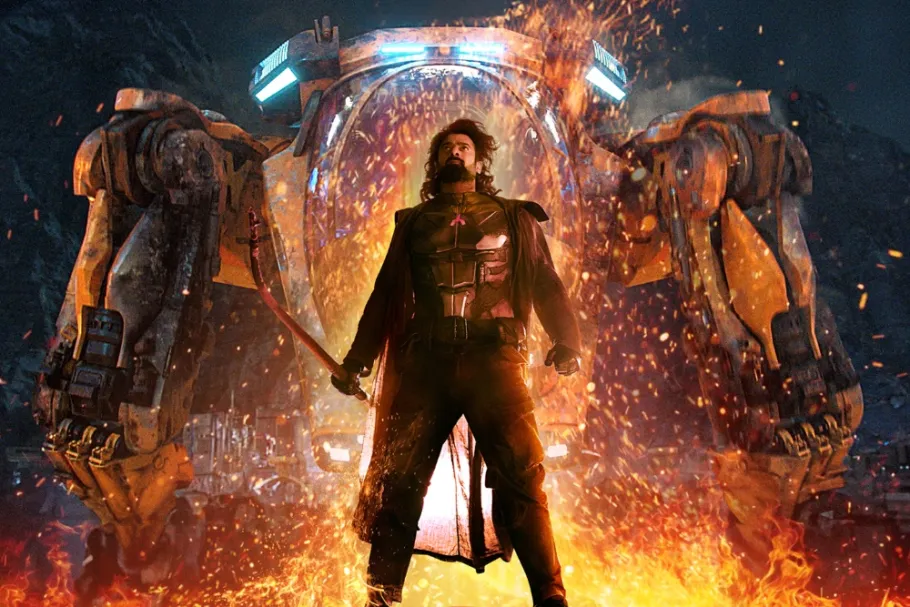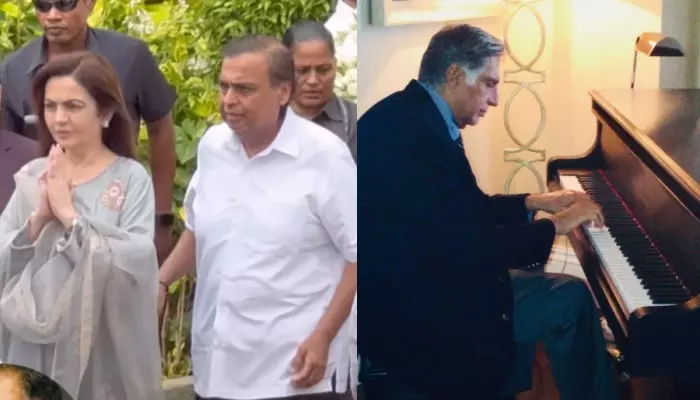
Nag Ashwin’s ambitious science fiction epic “Kalki 2898 AD” has taken the global box office by storm, earning a staggering $84 million worldwide and claiming the No. 3 spot upon its debut. With a budget estimated at $72 million, it stands as one of India’s most expensive cinematic endeavors to date.
Set in a dystopian future, “Kalki 2898 AD” chronicles the journey of Bhairava (Prabhas), a formidable warrior of enigmatic origins. Against the backdrop of a world scarred by warfare and environmental decay, Bhairava becomes intricately woven into an ancient prophecy. Amitabh Bachchan portrays Ashwatthama, an immortal figure hailing from the era of India’s mythological epic, the “Mahabharata,” while Deepika Padukone embodies Sumathi, who carries within her the unborn Kalki, an incarnation of Vishnu. Kamal Haasan assumes the role of Supreme Yaskin, the film’s antagonist. Interweaving elements of Indian mythology with futuristic technology, the narrative unfolds through grandiose battles that transcend both physical and spiritual realms.
The genesis of “Kalki 2898 AD” stemmed from Nag Ashwin’s exploration after his 2018 biopic “Mahanati,” which chronicled the life of Indian actor Savitri. However, his fascination with blending mythological themes and sci-fi had been brewing for years. “I’ve always wanted to create something that merges the epic battles of ‘Mahabharata’ from old Telugu films with universes akin to ‘Star Wars’ and ‘X-Men,'” Ashwin shared with Variety. He recalled the awe-inspiring scenes from classic Telugu cinema where arrows transformed into fire, water, snakes, and eagles during ‘Mahabharata’ conflicts, a concept he found captivating.
Produced by Vyjayanthi Movies, helming Ashwin’s expansive vision proved daunting. “To be honest, we didn’t fully grasp our goal at the outset,” Ashwin admitted. “It was only as we delved deeper into authentic design and complex action sequences that we realized the scale of this endeavor.”
The production employed VFX studios across India and internationally, with the Kurukshetra battle sequence, central to the ‘Mahabharata,’ being particularly demanding. “Initially, we aimed to handle everything domestically, but eventually, we engaged several foreign firms,” Ashwin explained.
For Ashwin, the greatest challenge lay in maintaining perspective over the lengthy four-year production period. “As director and writer, it was crucial to retain the essence of the script written in 2020 while shooting in 2023 or 2024,” he reflected. “You must always keep the bigger picture in mind.”
A standout moment for Ashwin was filming the clash between Amitabh Bachchan and Prabhas. “Witnessing Mr. Bachchan, the legendary action star, and Prabhas, the contemporary action hero, engage in combat was surreal,” he enthused. “Crafting these sequences for them was immensely satisfying, particularly since it resonated so strongly with audiences.”
The film reveals that Prabhas’ character Bhairava is the reincarnation of Karna from the ‘Mahabharata,’ a warrior trapped in dire circumstances. Ashwin elaborated on this narrative choice, expressing Karna’s need for redemption, to conclude his unfinished story.
“Both Ashwatthama and Karna embody the essence of the ‘Mahabharata,’ which isn’t merely about good versus evil but about individuals making choices within their circumstances,” Ashwin added. “These characters, initially aligned with the wrong side, find redemption by choosing a different path in this era.”
While hinting at a broader cinematic universe, Ashwin emphasized that the immediate focus remains on Part 2. “We’ve completed about 25-30 days of shooting, but extensive action sequences still await,” he revealed. “It’s akin to launching a new production.”
Looking ahead, Ashwin teased the sequel’s plot, promising closure for every subplot and a pivotal confrontation among key characters. He also noted the completion of Prime Video’s animated miniseries “B&B: Bujji and Bhairava,” serving as a prelude to “Kalki 2898 AD.”
As the film continues to thrive, Ashwin expressed gratitude for the positive reception. “Despite initial concerns about how a sci-fi film might be received in India, we’re delighted by the audience’s acceptance,” he remarked. “Their repeated viewing is the true measure of success.”
Regarding international prospects, Ashwin confirmed discussions for a Japanese release later in the year, citing Prabhas’ popularity in Japan. He remained optimistic about the film’s potential to resonate with Japanese audiences.















[…] […]
[…] […]